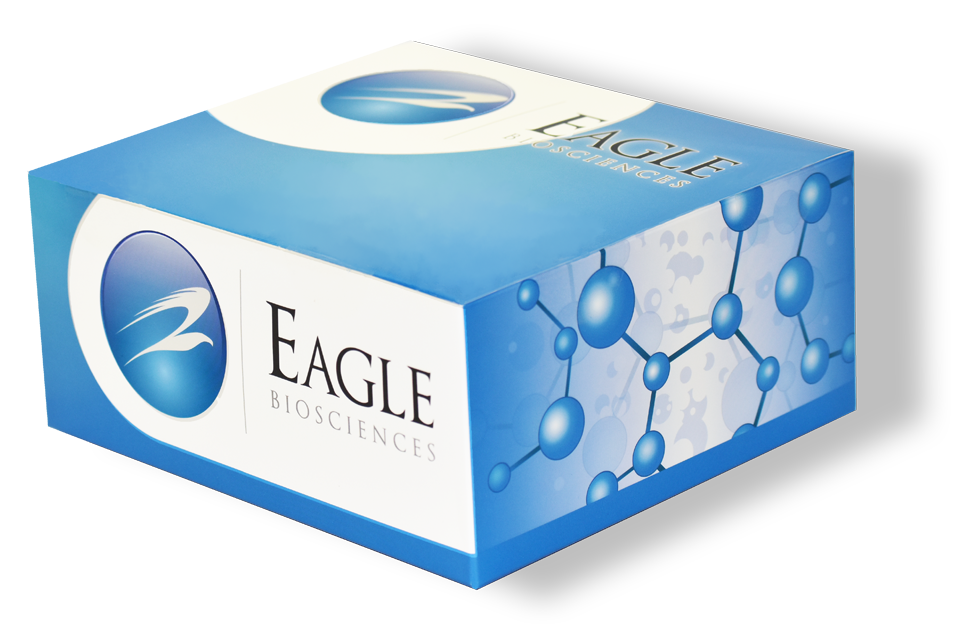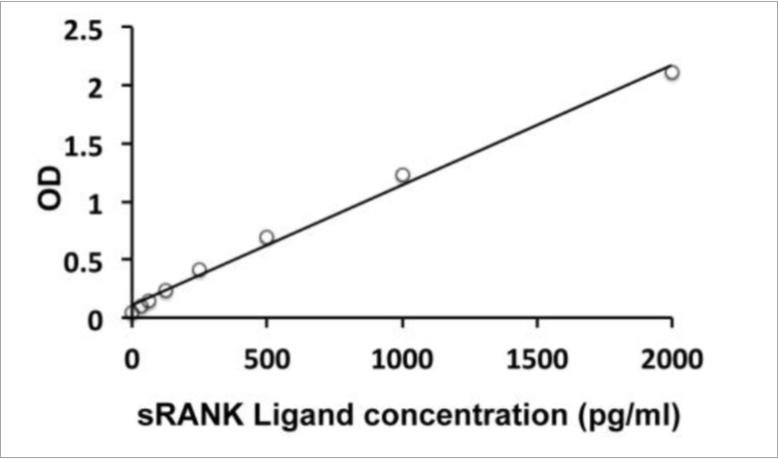Mouse sRANK Ligand ELISA Assay
Mouse sRANK Ligand ELISA Assay is For Research Use Only
Size: 1 x 96 wells
Sensitivity: 15 pg/ml
Dynamic Range: 31.25-2000 µg/ml
Incubation Time: 4 hours
Sample Type: Mouse Serum, Plasma, Cell Culture Supernatants
Sample Size: 100 µl
Alternative Names: Soluble RANK Ligand, sRANKL, TNFSF11, TRANCE
Assay Principle
The Mouse sRANK Ligand ELISA Assay employs the quantitative sandwich enzyme immunoassay technique. An antibody specific for sRANK Ligand / TNFSF11 / TRANCE has been pre-coated onto a microtiter plate. Standards or samples are pipetted into the wells and any sRANK Ligand / TNFSF11 / TRANCE present is bound by the immobilized antibody. After washing away any unbound substances, a biotin-conjugated antibody specific for sRANK Ligand / TNFSF11 / TRANCE is added to each well and incubate. Following a washing to remove unbound substances, streptavidin conjugated to Horseradish Peroxidase (HRP) is added to each microplate well and incubated. After washing away any unbound antibody-enzyme reagent, a substrate solution (TMB) is added to the wells and color develops in proportion to the amount of sRANK Ligand / TNFSF11 / TRANCE bound in the initial step. The color development is stopped by the addition of acid and the intensity of the color is measured at a wavelength of 450nm ±2nm. The concentration of sRANK Ligand / TNFSF11 / TRANCE in the sample is then determined by comparing the O.D of samples to the standard curve.
Related Products
iLite RANKL Assay Ready Cells
Free soluble RANKL ELISA
Mouse Soluble alpha-Klotho ELISA



